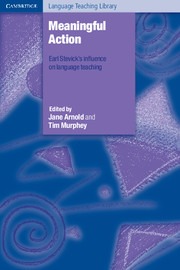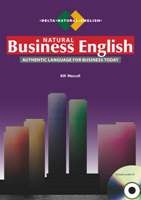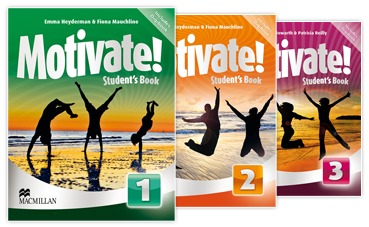Short Book Reviews
Hanna Kryszewska, Poland
Hanna Kryszewska is a teacher, teacher trainer, trainer of trainers. She is a senior lecturer at the University of Gdańsk, and EU Teacher Training College where she trains pre-service teachers. She is co-author of resource books: Learner Based Teaching, OUP, Towards Teaching, Heinemann, The Standby Book, CUP, Language Activities for Teenagers, CUP, The Company Words Keep, DELTA Publishing, and a course book series for secondary schools: ForMat, Macmillan. She is also co-author of a video based teacher training course: Observing English Lessons. Hania is a Pilgrims trainer and editor of HLT Magazine.
E-mail: hania.kryszewska@pilgrims.co.uk

Meaningful Action. Earl Stevick’s influence on language teaching. Edited by J. Arnold and T. Murphy. Cambridge University Press (2013). ISBN-978-1-107-61043-9, pp 331. The book has been published in the Cambridge Language Teaching Library, in which Jane Arnold also edited Affect in Language Teaching, while Tim Murphy (with Zoltan Dorney) published Group Dynamics in the Language Classroom. Given their individual interests, it is not surprising that the editors share their interest in the ideas of Earl Stevick on humanism, meaningful communication, meaningful activities and methods in language teaching, agency and self-directed learning have influenced generations of teachers. The nineteen contributing authors are well known names and experts in ELT; Christopher. N. Candlin, Donald Freeman. Diane Larsen-Freeman, Alan Maley, David Nunan, Herbert Puchta, Adrian Underhill and Penny Ur, just to name a few. Each author presents their views in one of the three areas the book which is divided into: making own meaning and making meaning between the people in the classroom, meaningful classroom activity, and frameworks for meaningful language learning. The individual contributions take different forms e.g. analysis of classroom interaction (C. Kristjansson), research results (J. Arnold), mapping out a selected area of the field (H. Puchta), a recent historical overview (A. Maley), stating or observing a problem and offering solutions (Diane Larsen-Freeman). Each chapter ends with a conclusion which relates it to the ideas of Earl Stevick and other prominent thinkers in the field. Finally not to be missed are the Epilogue by Carolyn Kristjansson who pays tribute to Stevick’s contribution to language teaching, and the Appendix which contains most of the contributing authors’ personal tributes to Earl Stevick. Sadly, the more timely, as the publication of the book coincided with Earl Stevick’s death in August 2013, whose contribution to ELT cannot be underestimated and, even worse, pushed aside considering the way language teaching is evolving; branching out into apps, on-line learning often neglecting the true meaning of learning.

Jokes and the Linguistic Mind. D. Aarons. Routledge. (2012). ISBN 978-0-415-89049-6, pp 272. Usually I do not start reviewing a book commenting on its cover; in fact I never ‘judge a book by its cover’. However, with Jokes and the Linguistic Mind I cannot resist mentioning the cover first. A Lego© rendition of a famous etching by M.C. Escher makes you smile, and wonder about the message the choice of the image on the cover sends out (original see below).

So before I open the book I google images for: M.C. Escher in lego, and I find a lot more similar renderings, which make me marvel at human creativity and humour. The image is a good beginning and a good reflection of what the book is about: sound linguistics dealing with a seemingly trifle yet extremely complex matter.
The book starts with an introduction mainly focusing on what the study of jokes tells us about the linguistic mind of humans. Playing with language is an inherent human feature, characteristic of both native children and adults, although sometimes the language games they play and jokes they enjoy are different in their nature. Non-natives’ understanding, or misunderstanding of native jokes is also touched upon, as well as problems with translating language jokes. The aim of the author, in her own words, is to ‘write a serious linguistic book that consists (almost) entirely of jokes’, an aim which she fully achieves. Jokes are analysed on various linguistic levels i.e. pragmatics, semantics, morphology, phonology, and syntax. Each category or subcategory is well illustrated by relevant jokes, quotes or transcripts from comic shows or films, and then thoroughly analysed. The author also touches upon cryptic crossword puzzles as a form of language joke, and how they exploit rules of the language, ambiguity and intuition of the person doing the cryptic crossword puzzle. (This section would also be a good introduction to those, especially non-natives, who would like to grapple with a cryptic crossword). The author focuses on the linguistic aspect of jokes, and on purpose leaves out other aspects such as social, sociological, cultural or pragmatic ones; to follow them up the readers would have to turn to other authors. The book has a strong linguistic slant, yet it is a very good read, and being so is highly recommended.

Natural Business English. Authentic Language for Business Today. B. Mascull. (2013) DELTA Publishing. ISBN 978-1-905085-72-9, pp 120. This book has been published in the DELTA Natural English series. The book is aimed at learners who want to learn the real language they would need to use in international business encounters today. The book mainly focuses on reading, listening and lexis. The lexical component includes individual words, lexical chunks, idioms and the language of business journalism. The topics include organisation of a company and leadership, sales, competition and marketing strategies, human resources, finances, financial markets, and global economy. The book can be used in class as it has a regular feature called Classroom extra with role-play ideas, discussions, Internet research to be done at home, the results of which students present in class, or homework which involves preparing presentations which are then presented in class. But the book can also be used as a self study book as it comes with a key and a CD. However, there is hardly any grammar focus and there are no ideas for writing activities. This means the teacher using the book in class will have to create their own activities to supplement the material, and give the learners a full coverage of the four skills and relevant grammar.

Motivate! Student’s Book 1, 2 and 3. E. Heyderman and F. Mauchline. Macmillan. (2013). ISBN 978-0-230-45379-1, ISBN 978-0-230-45380-7, ISBN 978-0-230-45381-4 (respectively)
pp126. This is a new course for secondary school students. It has a good balance of teaching the four language skills, grammar, vocabulary and pronunciation. It also contains elements of culture and CLIL. So basically it addresses all the areas that we need to cover in the modern classroom. The topics are up-to-date and will engage the learners. The choice of topics is fresh and stands out from many other coursebooks aimed at this level. The learners will not only learn English but will also learn about the world that surrounds it and the books will make them think and reflect about the world they live in. The visual material in the books is very pleasant to the eye; it is not the usual photoshop images we may find in many coursebooks published these days.

Please check the Methodology and Language for Secondary Teachers course at Pilgrims website.
Please check the Teaching Advanced Students course at Pilgrims website.
Please check the Certificate in Teaching Business English Level 1 course at Pilgrims website.
Please check the Improving English through Humour course at Pilgrims website.
Please check the CLIL: Content and Methodology for Secondary Teachers course at Pilgrims website.
Please check the CLIL Materials Development (Advanced Level) course at Pilgrims website.
Please check the CLIL for Universities course at Pilgrims website.
Please check the How to be a Teacher Trainer course at Pilgrims website.


|